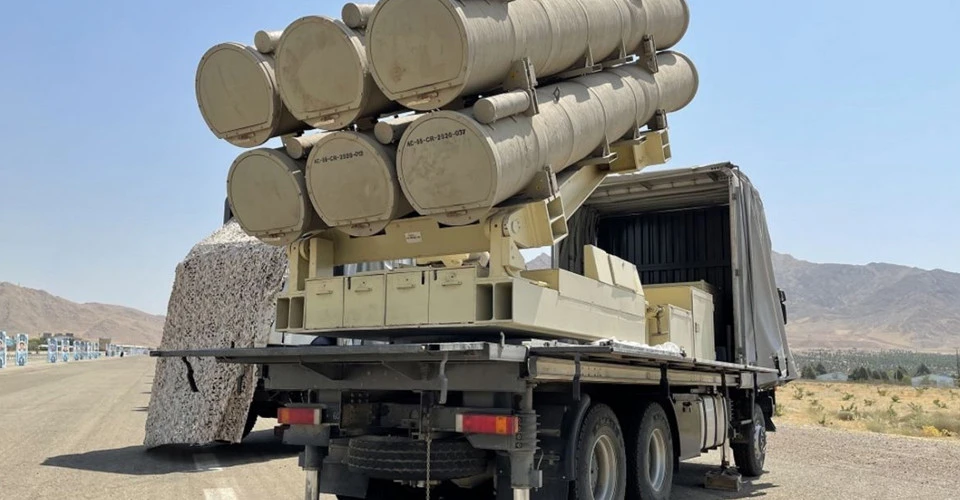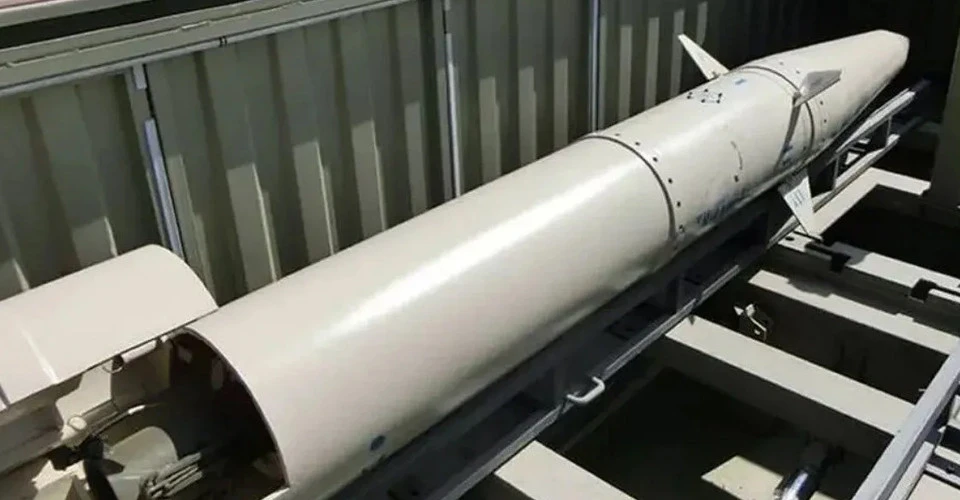
Analogous to HIMARS or Iranian Smerch: What are Fath-360 missiles Russia might use against Ukraine soon?
Ballistic missiles from Iran have already arrived in Russia, and within a few weeks Russia may use them against Ukrainians. This was stated by U.S. Secretary of State Antony Blinken in London on September 10. He also emphasized that the Russian military had already been trained in the use of Fath-360 missiles
Contents
- What is Fath-360?
- Technical characteristics of Fath-360
- Fath-360 in Russia - when and how many have been supplied
- Reaction to the supply of Fath-360 missiles to Russia
- What will the Fath-360 missiles target?
- How to fight Fath-360
What is Fath-360?
The Fath-360 (Persian for “victory”), also known as the VM-120, is an Iranian short-range tactical ballistic missile with satellite guidance. It is designed to destroy valuable enemy equipment near the front, such as air defense systems, armored vehicles, ammunition depots, command posts, and for counter-battery operations.
For launchers, the Iranians decided to use cheap civilian trucks. Thanks to the mechanics of tent shift, the launcher is indistinguishable from a tilt truck until it is brought into a combat position. Most of the launchers are designed for two missiles, but some can have up to 6.
The new weapon was announced on Iranian Army Day on April 18, 2022. A year later, in the spring of 2023, the Iranian army received several units at a special ceremony.
Back in 2022, when the weapon was still under development, Asian experts called it an analog of the US HIMARS. For Serhiy Zgurets, director of the Defense Express media and consulting company, the Iranian weapon evokes other associations.
“The Fath-360 tactical ballistic missile is a relatively new missile. It is closer in range and power to the Russian Tornado-S or Soviet Smerch MLRS. However, whereas Smerch strikes an area, this missile allegedly has an inertial guidance system and is guided by the Russian GLONASS satellite navigation system. The declared accuracy is up to 30 meters off target, but this is advertising data that has not yet been confirmed,” the military expert wrote.

Technical characteristics of Fath-360
- Length - 5.2 m,
- Diameter - 0.37 m,
- Weight - 787 kg,
- Warhead - 150 kg,
- Speed - 1020 m/s (Mach 3),
- Combat radius - up to 120 km.
Fath-360 in Russia - when and how many have been supplied
In total, about 1,500 missiles of this type were produced. Two hundred of them are already at Russia's disposal.
“In early September 2024, the Russians received 200 Fath-360 tactical ballistic missiles, which were most likely delivered by sea to one of the Russian ports on the Caspian Sea,” Defense Express wrote.
The transfer of these weapons to Russia did not come as a surprise. Reuters reported that back on December 13, 2023, representatives of the Russian Defense Ministry signed a contract with Iran for the supply of Fath-360 ballistic missiles, as well as a ballistic missile system called Abibal. Subsequently, the Russian military went to take part in exercises where they trained in the use of Fath-360.
Due to the establishment of cooperation with Russia, Iran has been increasing its production capacity. In 2024, the think tank Foundation for Defense of Democracies (FDD) used satellite imagery to identify 30 new production and storage buildings at the Modarres military base and the Khojir missile production complex to increase production of Fath-360 missiles.
Reaction to the supply of Fath-360 missiles to Russia
The official Tehran tried to keep the new stage in cooperation with Russia in the non-public sphere until recently. Thus, on September 8, the Iranian Foreign Ministry tried to deny reports of ballistic missile deliveries to Russia. At the same time, one of the parliamentarians, Ahmad Bakhshayesh Ardestani, confirmed that Iran was conducting barter deals with Russia, exchanging missiles and drones for soybeans and wheat. The Institute for the Study of War (ISW) believes that Iran hopes to receive not only food but also Russian Su-35 fighter jets in exchange for ballistic missiles.
The Ukrainian Foreign Ministry summoned Iran's charge d'affaires because of the missile supply to Russia.
“The Iranian diplomat was sternly warned that confirmation of Iran's supply of ballistic weapons to the aggressor state would have devastating and irreparable consequences for Ukrainian-Iranian bilateral relations,” the ministry's press service said.
The transfer of ballistic weapons to Russia was strongly condemned by Ukraine's Western partners. According to Blinken, the United States and Europe are already working on sanctions in response to Tehran's latest actions.
What will Fath-360 missiles target?
The threat of sanctions against Iran may also determine the use of missiles in the Russian-Ukrainian war. Thus, Serhiy Zgurets suggests that Russia will try to use Fath-360 missiles to stop the advance of Ukrainian troops in the Kursk region. This is because they cannot be jammed. The GLONASS satellite system operates on Russian territory, and Ukraine's electronic warfare assets do not completely cover this area.
Another nuance is the blurring of certain requirements of international sanctions. The use of missiles on internationally recognized Russian territory may have different consequences than strikes on occupied lands.
At the same time, most observers are convinced that Moscow and Tehran have long since crossed the lines of decency in international politics. Therefore, Russia will not hesitate to use Iranian missiles in Ukraine.
“Based on the characteristics of the Fath-360, we can assume that these missiles can be used by the Rashists in the battles in the East, to strike the positions of our (Ukrainian -ed.) troops, or to strike frontline cities such as Pokrovsk, Sumy, and Kharkiv,” Defense Express writes.
The Institute for the Study of War (ISW) believes that Russia will use ballistic missiles supplied by Iran to strike critical Ukrainian energy, civilian, and military infrastructure in the fall and winter of 2024.
British military analyst Sean Bell noted that when Russia starts hitting the near regions with Iranian missiles, it will free up long-range Russian missiles for areas where the Fath-360s cannot reach.

How to fight the Fath-360
Like other missiles, ballistic missiles from Iran will be shot down by air defense systems, including the S-300 and Buk systems. The more elite Patriot or NASAMS systems can also be used. However, it will not be easy to shoot down the Fath-360, says Bohdan Dolintse, an aviation market development expert.
“And while Patriot and NASAMS have a shortage of launchers and protect large cities, there is another problem with the S-300. There is already a significant shortage of missiles for this system. That is, realizing that the Russian Federation has 200 missiles, we will most likely not be able to intercept most of these missiles,” Dolintse said in a comment to RBC-Ukraine.
Another expert, Pavlo Narozhnyi, founder of the volunteer organization Jet Mail, has more optimistic forecasts. First of all, he believes that the several dozen Russian military personnel who, according to Reuters, traveled to Iran for training with Fath-360s are a small number.
In addition, given the relatively short range of Iranian missiles, the launchers will be an excellent target for Ukrainian Himars.
“The range of these missiles is 120 kilometers. This means that they will be located within the range of Ukrainian HIMARS. If we talk about the ATACMS missile, its minimum range is 150 kilometers and the maximum range is 300. When Kharkiv was attacked by Russian S-300 systems, permission was issued to destroy these systems using HIMARS. The S-300s were destroyed, and Kharkiv exhaled calmly,” Narozhnyi said on Hromadske Radio.
Serhiy Zgurets also believes that the most urgent way to counter such missiles is to destroy the launchers. However, the expert predicts that these launchers will be located on the territory of the Russian Federation. Therefore, in order to use ATACMS, which have a range of up to 300 kilometers, it is necessary to resolve the issue of restrictions on the use of these missiles on Russian territory. “We need to put pressure on our partners to get permission,” emphasized Zgurets.
“First of all, we need to strike directly at the warehouses where the missiles are located, airfields and carriers. Not only ballistic missiles, but also guided bombs and missiles. We also need to destroy targets in the air. However, we have some problems here due to the insufficient number of Patriot and SAMP/T batteries,” Lieutenant General Ihor Romanenko was quoted as saying by Channel 24.
- News












































